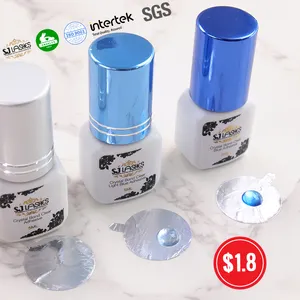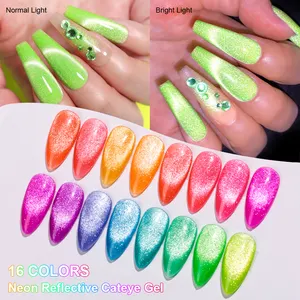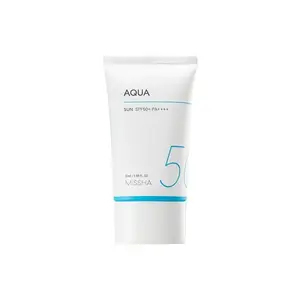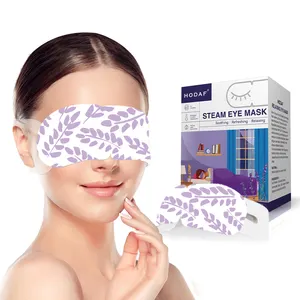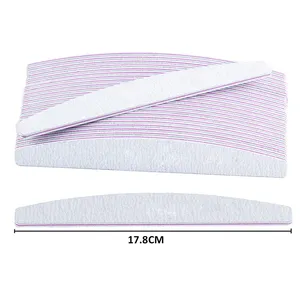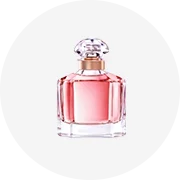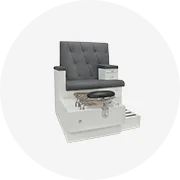Populaire dans votre secteur d’activité






Pierre de sable colorée, sable naturel, 10 — 20 mailles, 20-30 mailles, peinture par écrasage, teinture, vente en gros, collection 2020
139,61 € - 372,29 €
Commande minimale: 1 tonne métrique






Maison gonflable commerciale de rebond de PVC avec la glissière, château blanc de pullover d'explosion de piscine de cercueil
370,43 € - 418,83 €
Commande minimale: 1 pièce







Mini gonflable blanc rebond maison enfants anniversaire décorer enfant en bas âge gonflable blanc rebond château/lune rebond maison pour enfant
342,51 € - 370,43 €
Commande minimale: 1 pièce







En gros Nouveau Design Haute Qualité Filles Jouer Princesse Château Tentes Pour Enfants
7,45 € - 7,92 €
Commande minimale: 500 pièces







Château gonflable Commercial de 13 pieds, saut de château gonflable, Pvc, grande maison de rebond de mariage blanche 10x10
224,31 € - 251,30 €
Commande minimale: 1 pièce







Maison gonflable suspendue avec toboggan pour enfants, jouet d'extérieur, château gonflable, offre spéciale,
674,77 € - 693,39 €
Commande minimale: 1 pièce







L'aquarium de Gravier de Sable de Couleur Marron pour D'artisanat Enfants Jouent Vente En Vrac Coloré Décoration Pas Mouillé Tik Tok Offres Spéciales Sable Magique
153,57 € - 167,53 €
Commande minimale: 20 tonnes métriques






Offre Spéciale enfants non toxiques jouent des jouets éducatifs école déplacer modélisation sable
0,4561 € - 0,7074 €
Commande minimale: 60 pièces






Top Vente Couleur Sable Prix rouge/blanc/vert/jaune/bleu sable pour pavé/revêtement
93,08 € - 232,68 €
Commande minimale: 1 tonne métrique






Super blanc sable de silice de quartz blanc fin de haute qualité à vendre prix d'usine
Prêt à être expédié
51,19 € - 69,81 €
Commande minimale: 5 tonnes métriques
Expédition par pièce: 77,81 €






Sable de couleur époxy sable de couleur artificielle sable de couleur teint pour enfants sable d'art à vendre
0,2327 € - 0,3537 €
Commande minimale: 10 kilogrammes






Ensemble de jeu de sable de l'espace pour enfants de couleur de jouet magique de coton
0,1862 € - 0,5119 €
Commande minimale: 10 kilogrammes
Recherches associées:
moule et jouer le sablesable artificiel pour les enfantsprojet de sable artificielchamps blocbaha jouer sablemeilleur sable de jeu pour les enfantssable de jeu finhaute qualité enfants jouer sablesable de jeu rosesable de jeu blancsable de jeu bleujouer au sable pour bac à sablesable de jeu sûr pour les enfantssable de jeu rougebricolage jouer sable






Vente en gros de sable de couleur blanche pour pavage de plantes jeu pour enfants aquarium de sable décoratif paysage de jardin
0,4654 € - 0,7446 €
Commande minimale: 1000 jeux






Sable coloré de haute qualité et beau, sable de jeu coloré de pierres colorées utilisé pour la peinture de sable colorée d'art d'enfants
74,46 € - 121,00 €
Commande minimale: 5 tonnes métriques






Offre Spéciale fabricant Quatre roues enfants petit chariot élévateur meilleur qualité jouet cxcavator sable jouer tour sur camion
16,29 € - 18,34 €
Commande minimale: 20 pièces





Offre Spéciale jeu en plein air pistolet à eau pistolet électrique pistolet à eau jouets pour enfants
2,62 €
Commande minimale: 180 pièces






Fabricant de Offre Spéciale, petit chariot élévateur à quatre roues pour enfants, jouet de meilleure qualité, cxcavator, camion de jeu avec sable
17,22 € - 19,47 €
Commande minimale: 20 pièces






Offre Spéciale plage pelle jouet haute qualité sable jouer Kit plage jouet pour bébé vente en gros
1,77 € - 7,08 €
Commande minimale: 1 baril






HY Toys ensemble de jouets de plage ventes transfrontalières été enfants bord de mer jouer pelle à sable seau outils de dragage en gros
0,4096 € - 2,73 €
Commande minimale: 2 pièces






Vente en gros de sable de différentes couleurs pour peinture sur sable personnalisée DIY et décoration de sol
241,99 € - 335,06 €
Commande minimale: 2 tonnes





Vente et Vente en Gros de Sable Naturel Coloré de Haute Qualité Sable Coloré pour Enfants
0,2327 € - 0,3537 €
Commande minimale: 50 kilogrammes





Offre Spéciale sable blanc de sable de couleur naturelle pour le prix de la plage artificielle
Prêt à être expédié
51,19 € - 69,81 €
Commande minimale: 5 tonnes métriques
Expédition par pièce: 77,80 €






Ensemble de jeu de sable de l'espace pour enfants de couleur de jouet magique de coton
186,15 €
Commande minimale: 10 tonnes






Sable coloré pour la peinture de sable créative de sable de divertissement pour enfants
0,4654 € - 0,7446 €
Commande minimale: 1000 jeux






Sable coloré sûr et hygiénique Offre Spéciale en usine pour que les enfants jouent avec du sable naturel
74,46 € - 121,00 €
Commande minimale: 5 tonnes métriques






Sable de couleur naturelle, pour le marbre, le carrelage de sol, les articles ménagers, vente en gros
172,19 € - 186,15 €
Commande minimale: 20 tonnes






Sable de silice de sable de quartz blanc de haute pureté Offre Spéciale pour le prix usine de moulage d'investissement
Prêt à être expédié
116,34 € - 146,13 €
Commande minimale: 5 tonnes métriques
Expédition par pièce: 77,80 €






Vente en gros 10-20 mesh 80-120 mesh sable de couleur de divertissement pour enfants utilisé dans les sabliers de peinture au sable
0,4654 € - 0,7446 €
Commande minimale: 1000 jeux






Le gravier naturel de pierre de sable de surface polie par sable de vague de granit naturel pour la décoration de construction varie des tailles
74,46 € - 121,00 €
Commande minimale: 5 tonnes métriques






Sable coloré naturel de santé propre et de protection de l'environnement pour le sable de quartz naturel de plancher époxyde
74,46 € - 121,00 €
Commande minimale: 5 tonnes métriques






Vente de différentes couleurs de sable coloré pour le sable de jeu de peinture de sable de verre coloré
0,4654 € - 0,7446 €
Commande minimale: 1000 jeux






Galets décoratifs de paysage de rivière, pierre de galets, prix Offre Spéciale
Prêt à être expédié
51,19 € - 69,81 €
Commande minimale: 5 tonnes métriques
Expédition par pièce: 77,80 €






Fourniture de matières premières de peinture en pierre véritable Art décoratif Aire de jeux Sable naturel 100g Sable de quartz Silice naturelle
74,46 € - 121,00 €
Commande minimale: 5 tonnes métriques






Vente en gros de sable de couleur variée pour le bricolage de peinture de sable coloré artisanat d'art et décorations
0,4654 € - 0,7446 €
Commande minimale: 1000 jeux






Galets blancs neige dégoulinés pour aménagement paysager, prix d'usine Offre Spéciale
Prêt à être expédié
51,19 € - 69,81 €
Commande minimale: 5 tonnes métriques
Expédition par pièce: 77,81 €






Approvisionnement d'usine Construction Rivière Construction Naturelle Rivière Sable Naturel Blanc Sable Sable Coloré Pierres Naturel Aiguisé
74,46 € - 121,00 €
Commande minimale: 5 tonnes métriques






Sable Offre Spéciale Pour Aire De Jeux Table De Sable Sable
Prêt à être expédié
1,40 € - 1,87 €
Commande minimale: 50 kilogrammes
Expédition par pièce: 4,27 €






Parc d'attractions Équipement de jeu souple Terrain de jeu intérieur Bassin à balles Trampoline Piscine de sable Équipement de divertissement à vendre
60,50 € - 65,16 €
Commande minimale: 100 mètres carrés






Fmochl — jouet pour enfants, jeux de plein air, avec 4 panneaux, logo personnalisé imprimé, en cuir pu, vinyle uv, remplissage de sable, boules de juggings
0,0931 € - 0,1676 €
Commande minimale: 1 pièce






HUASHENG – boule de sable colorée Asalato en plastique pour cadeau, Instruments de Percussion, nouvelle collection
7,92 € - 9,31 €
Commande minimale: 50 pièces
Meilleures catégories
Concernant sable blanc de jeu à vendre
Faire les courses pour. sable blanc de jeu à vendre sur Alibaba.com pour rendre la maintenance de votre lieu de travail pratique et simple. Différents fournisseurs sont disponibles, vous pouvez donc rechercher un design qui fonctionne bien pour votre travail. Trouver. sable blanc de jeu à vendre qui peut être utilisé pour obtenir une finition lisse et brillante sur un véhicule. Faites le plein et gardez un approvisionnement prêt à l'emploi dans un lave-auto ou un atelier de réparation. sable blanc de jeu à vendre sont conçus pour le polissage humide. Certains disposent de plusieurs vitesses pour vous permettre de travailler à un rythme idéal et de gérer les travaux difficiles. Des engrenages durables et d'autres pièces permettent à plusieurs modèles de durer longtemps sans trop d'usure. Les poignées intégrées offrent souvent une prise en main confortable et une manipulation plus précise. De nombreux modèles sont conçus pour empêcher les tourbillons d'être laissés pour compte.
Fournisseurs de. sable blanc de jeu à vendre sur Alibaba.com offrent une variété d'options de personnalisation. La couleur et la tension de votre modèle peuvent souvent être modifiées pour répondre plus facilement à vos besoins. Certains fournisseurs peuvent également ajouter un logo si nécessaire. Commandez un échantillon pour tester un produit sans acheter un envoi complet. De nombreux fabricants disposent de plusieurs certifications afin que vous puissiez vous sentir en sécurité en utilisant leurs modèles dans votre établissement.
Que vous travailliez sur votre propre véhicule ou sur celui d'un client, Alibaba.com en a beaucoup. sable blanc de jeu à vendre pour vous. Obtenez un modèle qui peut gérer le travail avec facilité. Parcourez plusieurs options différentes pour les prix et les options personnalisables pour une commande qui vous convient.
Fournisseurs de. sable blanc de jeu à vendre sur Alibaba.com offrent une variété d'options de personnalisation. La couleur et la tension de votre modèle peuvent souvent être modifiées pour répondre plus facilement à vos besoins. Certains fournisseurs peuvent également ajouter un logo si nécessaire. Commandez un échantillon pour tester un produit sans acheter un envoi complet. De nombreux fabricants disposent de plusieurs certifications afin que vous puissiez vous sentir en sécurité en utilisant leurs modèles dans votre établissement.
Que vous travailliez sur votre propre véhicule ou sur celui d'un client, Alibaba.com en a beaucoup. sable blanc de jeu à vendre pour vous. Obtenez un modèle qui peut gérer le travail avec facilité. Parcourez plusieurs options différentes pour les prix et les options personnalisables pour une commande qui vous convient.

